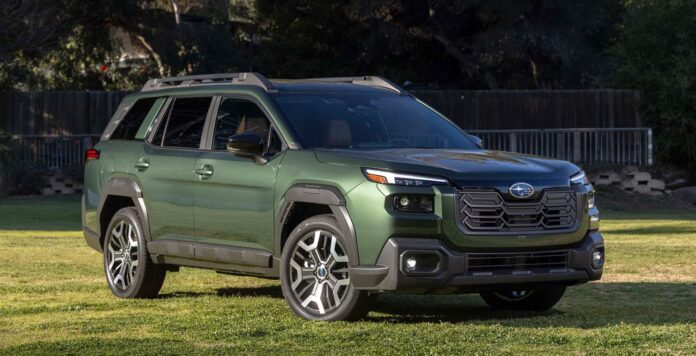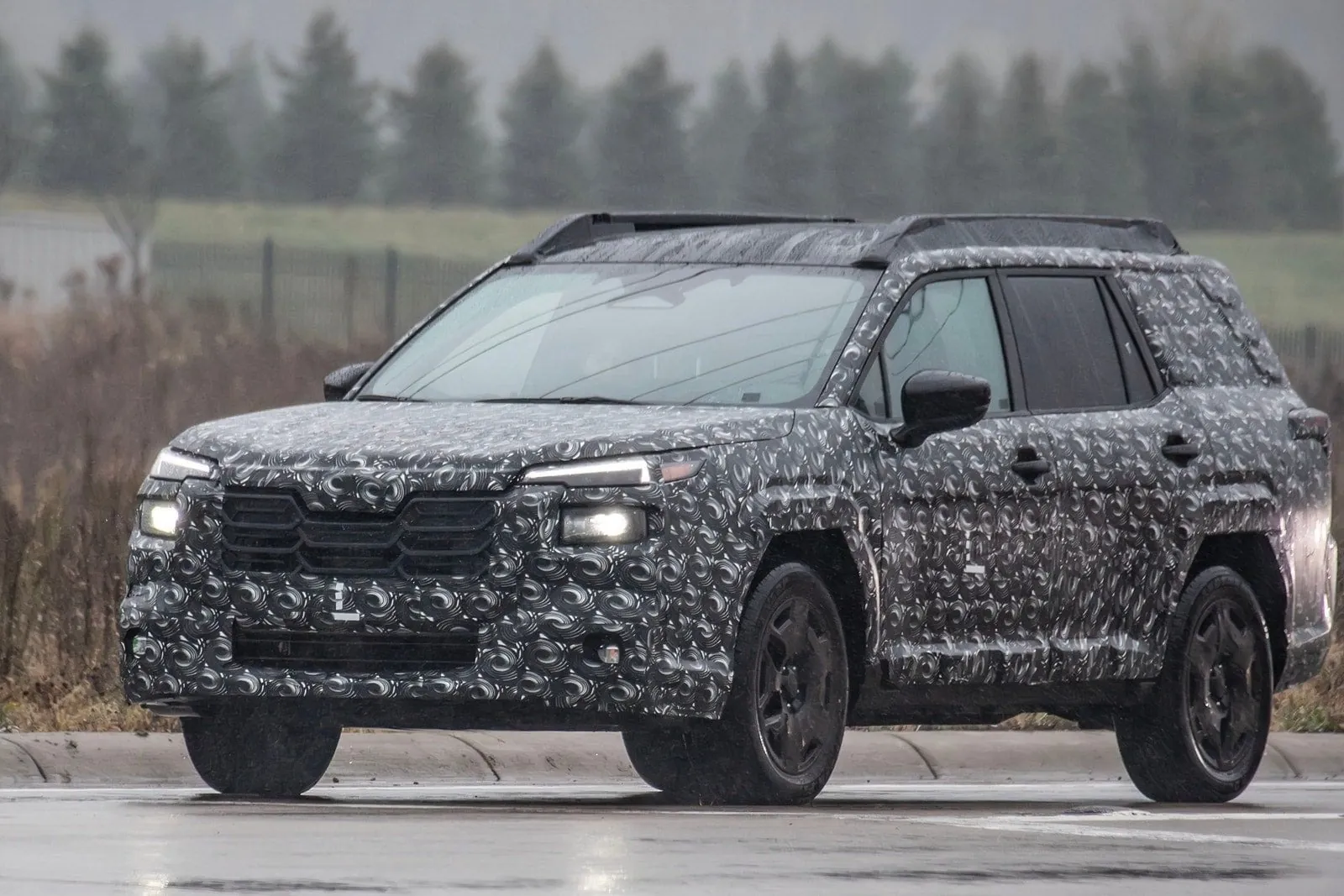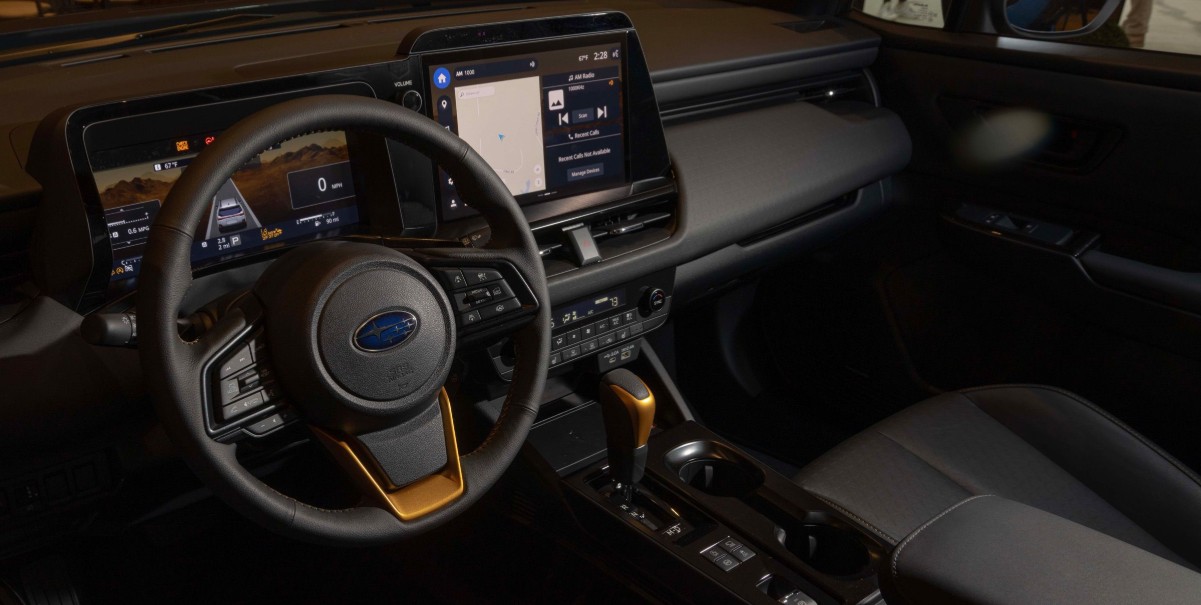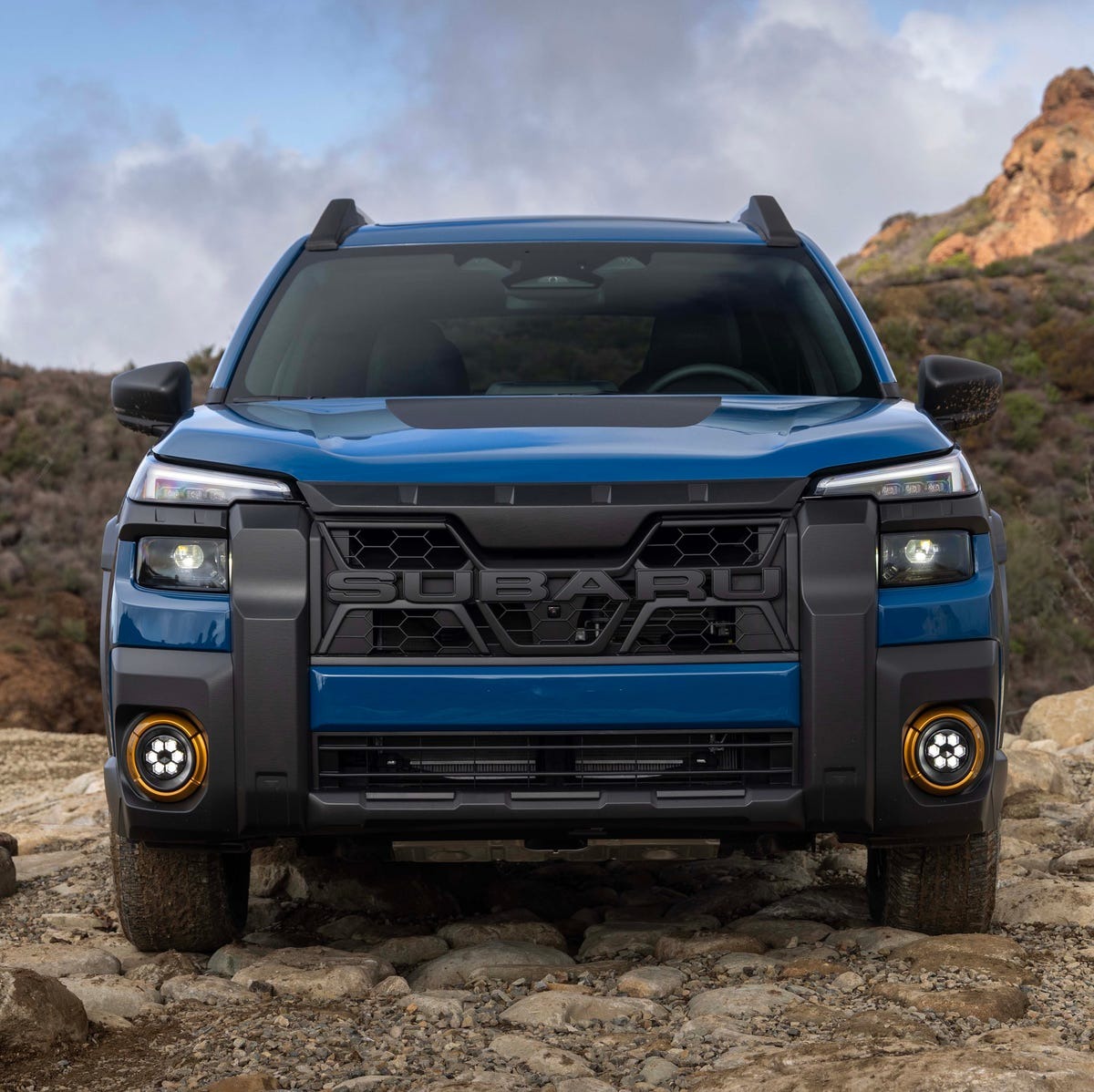
Subaru Outback has always been a little weird, in a good way. It was never quite a wagon, never quite an SUV, but it worked. For 2026, Subaru finally stopped pretending.
The new model shows up taller, boxier, and ready to be mistaken for something else entirely. It still does all the practical stuff owners expect, but now it adds trail-focused upgrades, smarter tech, and some cargo solutions that are oddly brilliant.
It looks different because it is. Subaru Outback has changed, and this time, it is not subtle.
Why Subaru Outback Looks Different and What You Actually Get Out of It

Subaru Outback looks nothing like it did before, but none of it was done for style alone. The new shape adds two more cubic feet of cargo, better roof strength, and wider rear access.
The taller profile gives it a stronger stance, but more importantly, it improves real-world function, especially for loading gear and using rooftop equipment.
The roof now supports 800 pounds of static weight. That means rooftop tents, recovery racks, or full camp setups are no longer just possible-they are expected. Subaru removed the foldaway crossbars because most drivers left them unused.
Instead, it built roof rails that are stronger and cleaner, with better tie-down points and etched guides for tent placement.
Changes to the rear bumper and tailgate were also done with gear in mind. The bumper has a scratch-resistant finish meant to support bags, coolers, or dogs jumping in and out.
The cargo floor is lower and wider, and the new washable divider doubles as a hammock, a dog shield, or a rear bumper guard.
None of that would work with the old shape. Subaru Outback looks different because it had to change in order to do more.
Interior Features in the 2026 Subaru Outback: What Changed and What Works

The 2026 Subaru Outback brings real interior changes that are not just cosmetic. Subaru focused on comfort, function, and tech layout-without crowding the cabin or turning it into a screen maze.
Every trim benefits from better seating, cleaner interfaces, and useful upgrades.
Main Interior Upgrades
| Feature | Standard On All Trims | Notes |
|---|---|---|
| 12.1-inch touchscreen | ✅ | Faster processor, physical climate buttons added |
| 12.3-inch digital cluster | ✅ | Multiple layouts: minimal, map, EyeSight view |
| Wireless CarPlay and Android Auto | ✅ | Standard across the lineup |
| StarTex water-resistant seating | ✅ | Durable and easy to clean |
| USB-A, USB-C, wireless pad | ✅ | Front row includes cable clip for wire management |
Digital Cluster That Actually Helps
The 12.3-inch instrument display switches between multiple modes. One keeps it clean and minimal.
Another mirrors classic analog. Navigation mode puts maps front and center. EyeSight view adds real-time lane tracking, nearby vehicle awareness, and cruise data with simple visuals that respond to steering input.
Seats Built for Long Trips
Subaru replaced the older seat design with low-fatigue frames mounted directly to the chassis. Support feels stronger through the lower back and upper shoulders.
StarTex comes standard across most trims and holds up against spills, gear, and daily wear. Touring models add ventilated Nappa leather with tighter bolstering for highway comfort.
Practical Layout
Door pockets now hold 32-ounce bottles. Console cupholders fit tall containers without rattling. A wireless charging pad sits near the shifter, flanked by USB-A and USB-C ports. A small built-in clip locks cables in place to prevent tangles.
Rear passengers get new bag hooks and easier seat folding mechanisms that create a flat cargo floor.
Cargo Space and Roof Load in the 2026 Subaru Outback: More Room, Smarter Use
The 2026 Subaru Outback did not grow just to look different. That extra height and width translate into real gains where it matters- cargo, roof gear, and daily usability.
The rear section was completely reshaped to give more vertical room, a wider floor, and easier rear access.
| Area | 2025 Outback | 2026 Outback |
|---|---|---|
| Cargo space behind second row | 32.5 cu ft | 34.6 cu ft |
| Roof static load | 700 lbs | 800 lbs |
| Roof dynamic load | 176 lbs | 220 lbs |
| Roof lateral load | N/A | 220 lbs |
The extra 2.1 cubic feet comes mostly from a taller roofline and a slightly lower floor.
Roof Rails Built to Be Used
The new roof setup supports up to 800 pounds of static weight. That means full rooftop tents with two adults are finally within spec.
The rails also support 220 pounds of dynamic and lateral load, which helps when driving with a full setup or anchoring gear like hammocks or recovery straps.
Foldaway crossbars were dropped, but not by accident. Subaru found that most owners used aftermarket setups anyway, so they ditched the built-ins and reinforced the rails to support real-world gear better.
Outstanding Cargo Features
- The washable cargo cover now folds into a divider, bumper protector, dog barrier, or hammock.
- Rear bumper gets a scratch-resistant top so you can set gear down without worrying about scuffing the paint.
- Cargo hooks and bag holders are built into both side walls.
- Rear gate opens wider and higher for boxier loads.
- Roof spoiler includes etched mount guides for tents and racks.
Performance and Engine Options in the 2026 Subaru Outback: What Powers It and How It Handles
Subaru did not reinvent the powertrains for 2026, but it did refine what already worked. The 2026 Subaru Outback keeps the same two flat-four engines, both paired with a CVT and standard all-wheel drive.
The improvements come from tuning, software updates, and smarter power distribution that helps more in real-world conditions than spec sheets.
Engine and Powertrain

| Trim Levels | Engine | Horsepower | Torque | Transmission |
|---|---|---|---|---|
| Base, Premium, Limited | 2.5L flat-four | 180 hp | 178 lb-ft | CVT |
| XT, Wilderness | 2.4L turbo flat-four | 260 hp | 277 lb-ft | CVT |
The 2.5-liter returns with slight torque gains and slightly less horsepower, though the change is so small it will not be noticed.
The 2.4-liter turbo in the XT and Wilderness trims keeps its 260 horsepower, but torque increases to 277 lb-ft. That boost helps with towing, trail work, and heavier roof setups.
All-Wheel Drive and X-Mode Upgrades
Every 2026 Subaru Outback includes symmetrical all-wheel drive, but the system itself is new. Subaru added a faster-reacting center differential and revised the control software.
The car now takes steering input into account when shifting torque, making cornering more stable and off-road driving more predictable.
X-Mode also gets new terrain-specific settings in the Wilderness model, with modes for Snow/Dirt and Deep Snow/Mud.
The system can now be adjusted through a steering wheel control, so you do not need to reach for the screen when things get tricky.
Ground Clearance and Suspension Differences
| Model | Ground Clearance | Tires | Suspension |
|---|---|---|---|
| Base to Touring XT | 8.7 in | 18-19 inch street-focused | Standard multi-link |
| Wilderness | 9.5 in | 17 inch all-terrain | Electronically controlled dampers |
Wilderness Trim Goes Further Than the Rest, and It Shows in the Details

Wilderness is not a styling package. It is the only 2026 Subaru Outback built to take abuse straight off the lot. Everything added serves a purpose-from tires to bumpers to interior materials.
What the Wilderness Trim Adds
| Feature | Wilderness Trim | Standard Outback |
|---|---|---|
| Ground Clearance | 9.5 inches | 8.7 inches |
| Approach Angle | 20.0° | 18.6° |
| Breakover Angle | 21.2° | 19.4° |
| Departure Angle | 22.5° | 21.7° |
| Tires | 17″ A/T | 18-19″ street |
| Suspension | Electronically controlled | Standard multi-link |
| Skid Plates | Included | Not available |
| Fog Light Trim | Copper | Standard black |
| Grille | Block-letter SUBARU | Subaru badge |
No Hands Needed: Subaru’s First Semi-Autonomous System Explained
Now here is the full section, written to match that title, clean structure, correct tone, and no wasted space:
Subaru finally brought hands-free driving to the Outback lineup. For the first time, higher trims come equipped with a semi-autonomous highway system that works up to 85 mph.
It uses a set of three forward-facing cameras mounted by the rearview mirror and radar sensors integrated into the grille.
The system keeps the car centered, maintains speed, follows traffic, and handles light curves.
If the driver becomes unresponsive, it signals, slows down, moves safely to the shoulder, and alerts emergency services automatically.
Standard EyeSight Across All Trims
Every 2026 Subaru Outback includes the latest version of EyeSight with:
- Adaptive cruise control
- Lane centering
- Pre-collision braking
- Lane departure warning
- Lead vehicle start alert
When the 2026 Subaru Outback Arrives and What to Expect Before It Hits the Lot
Subaru confirmed that the 2026 Outback will reach dealerships in spring 2026. Wilderness models will arrive slightly later, landing early that year depending on production flow.
Final pricing will be announced closer to launch, but current estimates suggest a starting point just over $32,000, with top trims stretching close to $50,000.
That leaves a long wait between reveal and arrival. Plenty of time for fans to debate the look, question the roofline, and argue about wagon vs SUV.
But none of that changes what this Outback is built to do. It may look different, but it’s still about utility first-and that’s why most buyers came in the first place.
| Base Price | $32,000 to $50,000 (est) |
| Drive Layout | AWD, front-engine |
| Powertrains | 2.5L flat-four (180 hp, 178 lb-ft) |
| 2.4L turbo flat-four (260 hp, 277 lb-ft) | |
| Transmission | Continuously variable (CVT) |
| 0-60 mph | 6.5 to 9.0 seconds (est) |
| Fuel Economy (est) | 22-27 mpg combined |
| Curb Weight | ~4,000 lbs |
| Dimensions (L × W × H) | 192.3 in × 75.8-76.0 in × 68.1-68.4 in |
| Wheelbase | 108.1 in |
| Cargo Volume | 34.6 cu ft |
| On-Sale Date | Spring 2026 |
This version of the Subaru Outback keeps the core formula intact but expands it. More tech, better clearance, smarter packaging-and a look that stops pretending to be a wagon.
Love it or not, this is where the Outback was heading all along. And now it is finally there.
Read Next – Nissan Altima CVT Transmission Troubles Explained
















